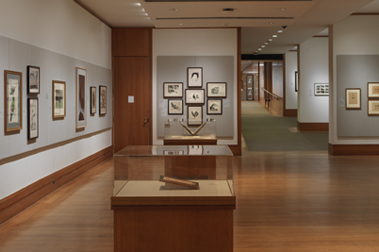Treasury House, 10 Downing Street, London: Plan of Lady Walpole's Drawing Room (Northwest Corner Room, Second Floor)
Artist and architect Isaac Ware British
Artist and architect William Kent British
Patron Robert Walpole, 1st Earl of Orford British
Not on view
This is one of eight drawings in the album that relate to Treasury House. In 1732 George II offered Sir Robert Walpole, the First Lord of the Treasury two adjacent properties to serve as a London residence. These included a sixteenth-century mansion facing St. James's Park and townhouse behind it fronting onto Downing Street, the latter designed by Sir Christopher Wren in the seventeenth-century. The location next to Whitehall Palace and within walking distance of Parliament suited the busy first minister and Walpole accepted the gift on the condition that the residence pass to subsequent holders of his office, rather than to his heirs. After an adjacent cottage was vacated and torn down, William Kent gutted the interiors and united the structures, creating a new complex of sixty rooms. Walpole and his wife took up residence in 1735 and remained until 1742 (additional work, such as the construction of a terrace facing the park continued after 1735). When Walpole left office in 1742, he vacated the house and his picture collection was sent to Houghton.
"Number 10" today remains the the official residence of Britain's Prime Minister and has undergone several subsequent rebuiding campaigns. Walpole, who worked closely with his Whig allies in Parliament, and with George I and II, to secure the Hanoverian succession, is now considered the nation's first Prime Minister in the modern sense (although he was not called that, since the term only came into common use in the nineteenth century).
Kent's reputation as an architect and designer of interiors had been established at Chiswick House, which he completed in 1729 for Lord Burlington, then in the interiors designed at Houghton Hall (ca. 1725-35) for Sir Robert Walpole. These undoubtedly led to the commission to create the new Treasury House. Isaac Ware had worked as chief-of-works at Houghton and inscriptions by Horace Walpole on several of these drawings identify him as draftsman.


